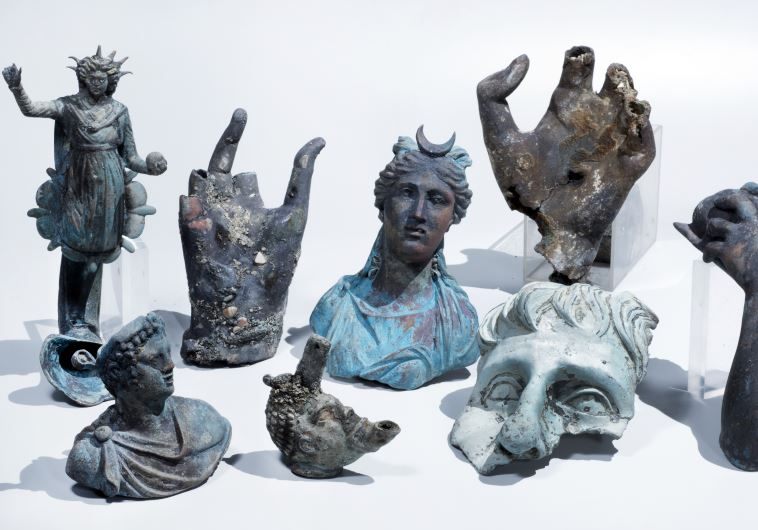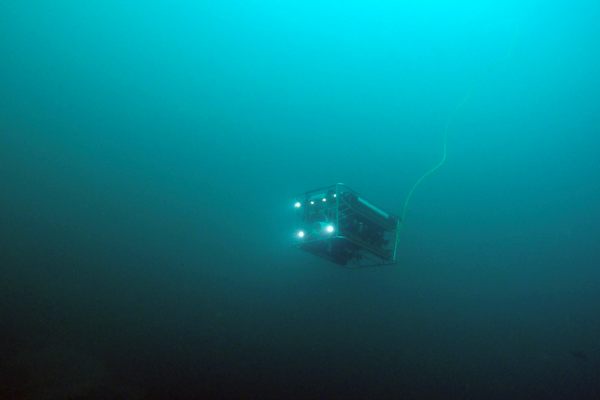Found: A 1,600-Year-Old Shipwreck Full of Treasure
Rare statues and thousands of coins.

Statues found in the sand. (Photo: Israel Antiquities Authority)
Earlier this spring, when two divers were exploring Caesarea National Park, off of Israel’s coast, not far south from Haifi, they noticed that the sand of the sea floor had shifted and revealed a shipwreck. What they found, the Israel Antiquities Authority says, is a trove of marine treasure “such as…has not been found in Israel in the past thirty years.”
The two recreational divers immediately reported their find to the IAA. When marine archaeologists examined the wreck, they found that it was 1,600 years old, dating back to the Late Roman period, and full of rare bronze artifacts and clumps of coins, still in the shape of the vessel that had carried them.
The ship had carried statues of Roman gods—the sun god, Sol, and the moon goddess, Luna—and other bronze statues. These were often melted down and recast, so it’s rare to find bronze statues from this period in such good condition. The lumps of coins contained thousands of pieces stamped with the head of Constantine.
This would have been a merchant ship, one of many that traveled to Israel’s ports. The archaeologists think it met its fate after being caught in a storm and smashing against the shore; the crew had cast anchors to stop the shift from drifting that close to land, but it went down, its cargo in tact and preserved on the sea floor until now.
Bonus finds: A new form of light
Every day, we highlight one newly found object, curiosity or wonder. Discover something amazing? Tell us about it! Send your finds to sarah.laskow@atlasobscura.com.








Follow us on Twitter to get the latest on the world's hidden wonders.
Like us on Facebook to get the latest on the world's hidden wonders.
Follow us on Twitter Like us on Facebook